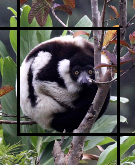Graceful White-naped Cranes (Grus vipio) flying overhead at Poyang Lake, China
Birding Expedition to Poyang Lake!
November 24-27, 2010
Guide: Zhang Lin, Shanghai Birding Tour
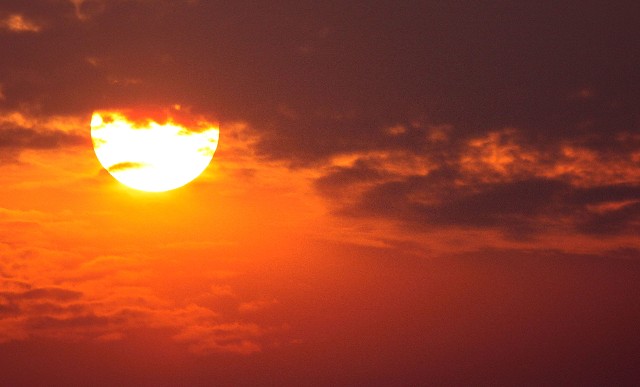
A Jiangxi sunset over Poyang Lake.
To see even more images of our Poyang Lake adventure log on to

Poyang sunset!
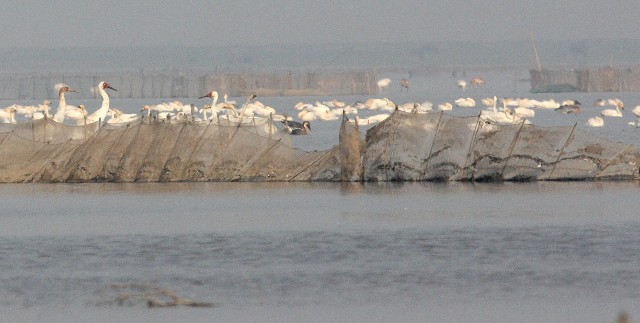
Siberian Crane (Grus leucogeranus) seen hanging out in Poyang Lake, China
Nearly four months now since we’ve arrived in China. We have had so many incredible experiences since our new adventure started but very few nature-oriented. Now that we are past some of the introductory hurdles of starting a new life abroad, we are now looking forward to several wildlife adventures in the very near future. Soon to come are Yunnan, Sichuan and the Qinling Mountains and more!
The Thanksgiving break of 2010 was our first major nature expedition of our new lives here in China. Of course, I don’t want to discount the excellent trip to Rudong and Chongming Island done earlier this fall, but our trip to Poyang Lake in Jiangxi Province was epic.
Poyang Lake is one of the largest, if not the largest, fresh water lakes in China. Although it is quickly shrinking due the ecologically devastating effects of the Three Gorges Dam on the Yangtze River, the lake is an ecological marvel. With over 3500 square km of surface area, the lake region is vast to say the least. Poyang Lake is the wintering grounds to well over a half a million birds from around eastern Asia. We spent the better part of three days working our butts off covering a very small corner of the lake. We covered by vehicle hundreds of kilometers and at least dozens of km by foot! And most of that in the mud! Our efforts were well compensated with sightings of nearly a hundred thousand birds and all our targets realized.

Map of Poyang Lake (linked from Siberian Crane Wetland Project)
Although the lake is experiencing intense pressures from the surrounding human population, located mainly in Nanchang and YongXiu, the lake ecosystem is impressive even to this day. The areas of the lake visited (and satellite lakes) were mainly shallow, marsh-like communities that were very recently (in some cases as recently as a few days prior) flooded with the summer rain waters and the Yangtze River overflow. Consequently, we spent a great deal of time and energy trekking through some mighty thick and viscous mud to get to see the birds we were there to see. The mud was in some cases so saturated that walking was impossible and we were forced to seek other routes to approach our targets. This did make seeing the birds in close quarters challenging to say the least.

Usually the walking started on solid ground....

And then eventually the boots had to come off....

Yummy!
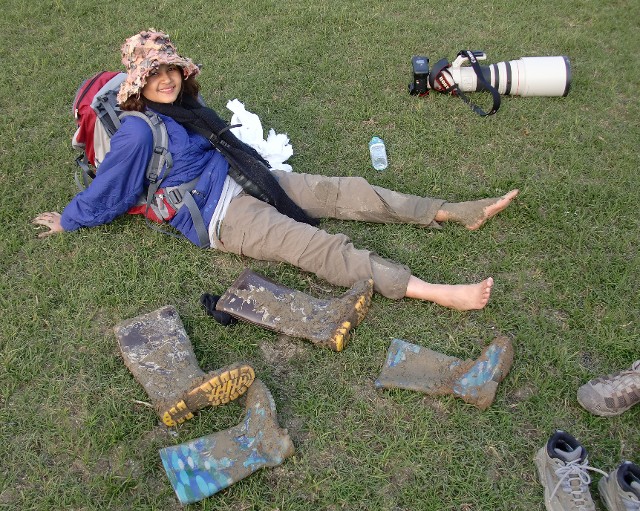

Yup, cars weren't immune to the mud either....
There is virtually no infrastructure for wildlife viewing in the lake region, which makes the whole experience somewhat of an adventure! The wildlife is profuse and present in huge numbers, but getting to the areas that are most populated is a bit hit-or-miss. But when you have the skilled leader we had, Zhang Lin of Shanghai Birding Tours, we were able to maximize our limited time. Zhang Lin is truly an expert, not only of the birds of the region, but the side roads and canal embankments of the Poyang area. So with his expertise, we were able to zero in on our target species, which for me were mainly the FOUR species of cranes for whom the lake provides a winter home.

Siberian Crane (Grus leucogeranus)
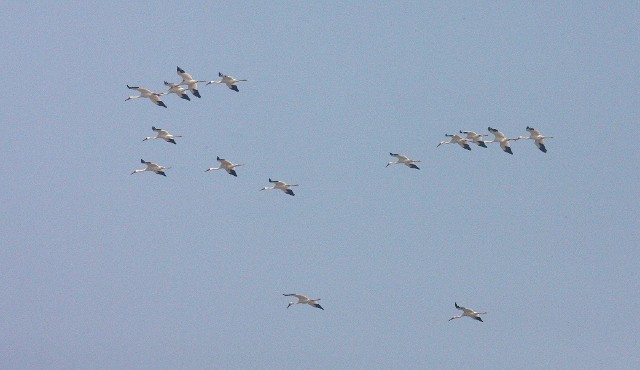
Siberian Crane (Grus leucogeranus) coming to feed!
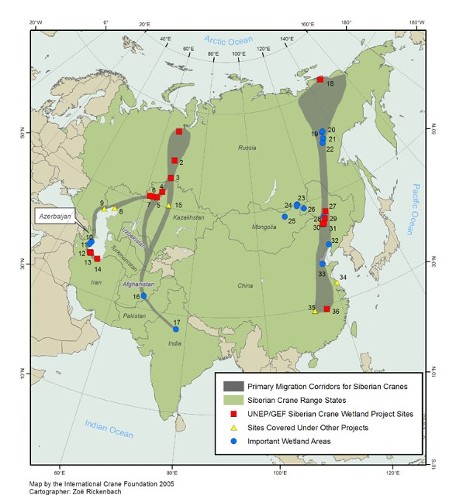
Siberian Crane Migration Pathways. In 1997, I was fortunate to see the one crane that made it down to Kaleodeo, India and stuck around all summer. The majority of the cranes migrate to Poyang Lake, China. (Map linked from Siberian Crane Flyway Coordination Project)
Poyang Lake is a winter home to at least 98% of the world’s total population of Siberian Cranes, who fly all the way from the northern tundra of Russia to winter and breed in China. My main goal was to see these birds in close proximity and photograph them in good light. Oh well….. We did manage to see at least 800-1100 individual Siberian Cranes, some as close as 200 meters (before they took flight), but the light was so variable during the trip that hi-resolution photography was next to impossible. The lake is famous for its winter fogs, and this trip was right in the middle of the foggy season!
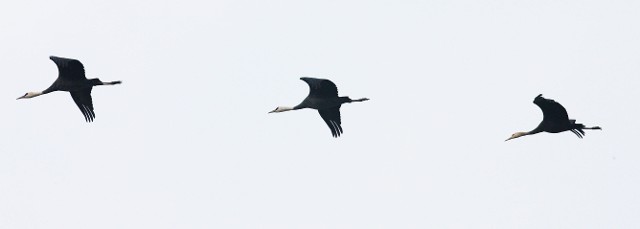
Hooded Cranes (Grus monacha)
Although the light was challenging, the wildlife experiences were phenomenal nonetheless. We were able to locate, view and photograph Siberian Cranes within our first hour in the field. Zhang Lin had been to the lake very recently and had a pretty good idea where to start our search. His instincts were dead on. I was ecstatic to see the Siberian Cranes right off the bat! And we were also able to lock on to White-naped and Hooded Cranes at the same time in a mixed flock! The White-naped are no doubt one of the most spectacular birds on the planet. Throughout our stay in the region we spent time viewing and photographing at least 200-300 White-naped and 250++ Hooded Cranes. We even caught good views of at least 20-25 Common Cranes who are also found in the region. I was particularly impressed with how close all of the species flew overhead, even though close approaches on land were challenging.
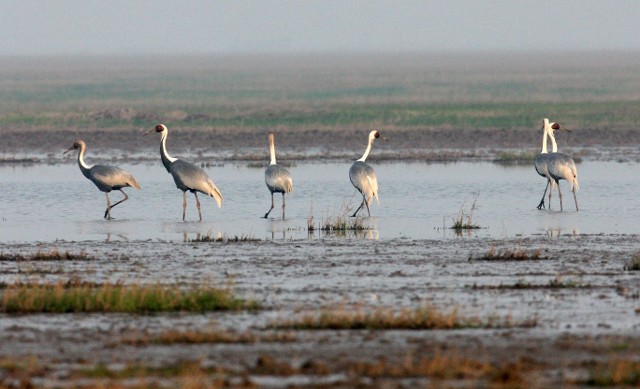
White-naped Cranes (Grus vipio)
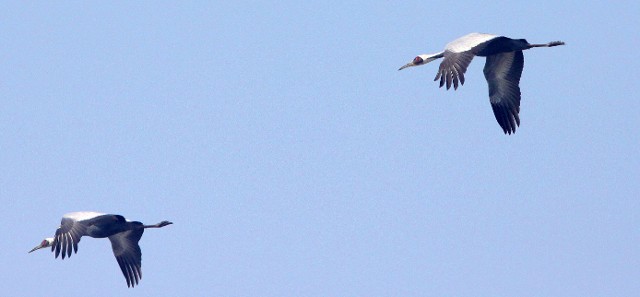
Some White-naped Cranes flying overhead!
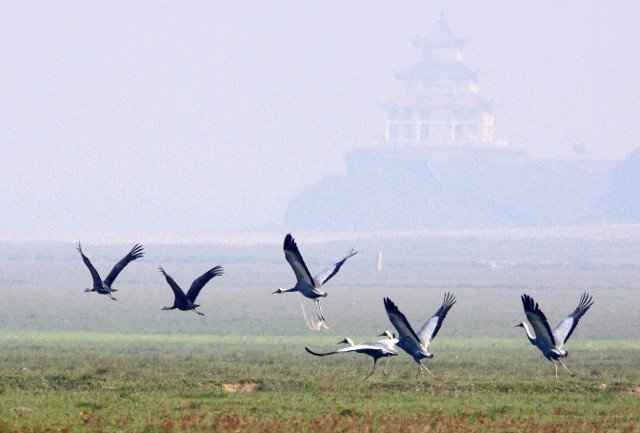
White-naped Cranes taking flight on the grasslands near Wu Cheng Town on Poyang Lake
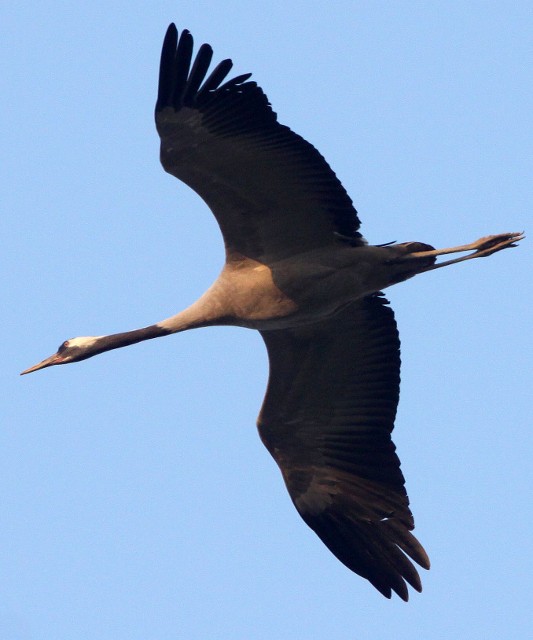
A spectacular Common Crane (Grus grus) flying overhead!
During our three day adventure, we visited Poyang Lake Nature Reserve and Nan Ji Hill Nature Reserve to view bird. These reserves are located fairly distant from each other, so we were able to see some interesting cultural and historical sites along our travels as well. Poyang Lake has a long and rich history dating back well over a thousand years (and no doubt much longer). One place of extreme interest was Ji Hill Village, where we were able to stroll around bird watching, but at the same time, seeing a truly ancient village that still had evidence of its history literally littering the paths. Artifacts and ancient bricks and carved stone were strewn throughout walkways of the village. Clearly no archaeology had been initiated there but I could sense that the village was a treasure-trove of historical artifacts. We also spent time (waiting for the fog to lift mainly!) strolling the historical avenues of Wu Cheng Village as well. The population of Poyang had actually decreased over the centuries and was actually a much more significant trading hub during the Han and Ming dynasties.
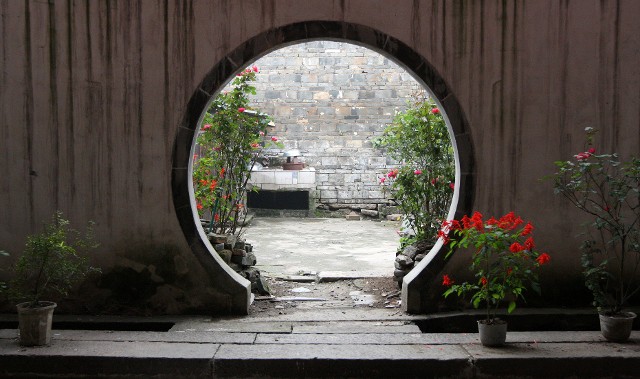
The evidence of by-gone dynasties were pervasive throughout Wu Cheng village.

Village scenes
Although the fog did cut in to our wildlife viewing to a certain degree on day two of our expedition, it did provide for some pretty surreal experiences while we were waiting for it to lift when we were out in the field. On day two, we trekked about 1.3 km in to the fog in the direction of where we noted the massive Siberian Crane flock the day before. The fog became thicker as we reached the area we thought the flock would be. Luckily Zhang Lin had his trusty GPS to get us to the correct spot. About the time we reached the spot near the flock, we decided to wait for the fog to lift. During the one+ hour wait for the lift, I was enjoying the sounds of the thousands of birds in the distance “talking” to each other. The fog actually seemed to amplify the sounds of the chatting birds, which numbered in the thousands or more. This was indeed a rich experience in itself.

Som's "Ghost Cranes" startled to flight as Som was trekking the fog looking for them!

Som had an interesting fog-related experience as well. While walking toward the flock, she thought she had seen some “large birds” not too far off in the fog. But as she and Zhang Lin tried to focus in on the birds, a thicker fog bank slammed in and made them invisible. Som, being the OCD person she is, refused to let them go by without a good, quality sighting. She ventured off be herself deeper in to the fog to get them on film. I had no doubt that she would “find ‘em if they were there”! Sure enough, she came back with the thumbs-up sign indicating she had accomplished her goal! Evidently the fog was so thick that she was able to get just a few feet away from the chatting White-naped Crane trio. The images she captured vindicated her sighting!

Overall we were extremely impressed with the success of the trip to Poyang Lake. We got our target species right off and then proceeded to tick-off at least 55-60 additional species, at least half of which were lifers for me. Other avian highpoints to the trip were the Baer’s Pochards spotted with Zhang Lin’s expertise in one of the ponds of Nan Ji Hill Reserve. Evidently there are only about two of these exceedingly rare birds that come to Poyang every year! And Zhang Lin was able to pick them out of the literally hundreds of thousands of other birds floating in the ponds!

Even Cokie was impressed by the sheer numbers of birds seen at Poyang.

Som, scouting for another good approach.

Stomping for Japanese Swamp Warblers!

A crappy picture Marsh Grassbird (Japanese Swamp Warbler) (Megalurus pryeri)
Another rarity seen was the Japanese Swamp Warbler (or Marsh Grassbird) that was elusive for nearly the entire trip. But in the final minutes of our last day, just before we had to zoom off to the airport for our return trip to Shanghai, Zhang Lin decided to “stomp” a grassy field next to the road in an effort to flush one or two out. I took no less than twenty steps out of the van door before I saw this little non-descript warbler zip right below my boot! Got it! (Hell, I nearly stepped on it!) For the next 20 minutes or so, we flush a couple more and even got some good views of a brand new resident to this part of China. The Japanese Swamp Warbler started breeding in Poyang Lake only a couple years back!
Som, Cokie and I are starving for some mammal-watching, but the birding experiences we’ve had thus far are staving off complete starvation for the wilderness experience! And Poyang Lake has shown itself to be a great annual destination for the Smith family for every year we call China our home. We all felt the wildlife viewing was superb and the feel of the towns, villages and countryside was welcoming and a delight to be in. Our memories of the Poyang Lake area will be fond ones indeed. Next month, India!
****
Other Bird Images from Poyang Lake!

Siberian Crane (Grus leucogeranus). While approaches on the ground were a bit tough, we did see several up close and personal as they flew overhead!

White-naped Cranes (Grus vipio) are easily some of the most spectacular birds around.

Hooded Cranes (Grus monacha) taking flight in Poyang Lake Nature Reserve. If only the light were better!

Hooded Cranes (Grus monacha). I was racing the man on the left side of this image to get to the birds first....He beat me.
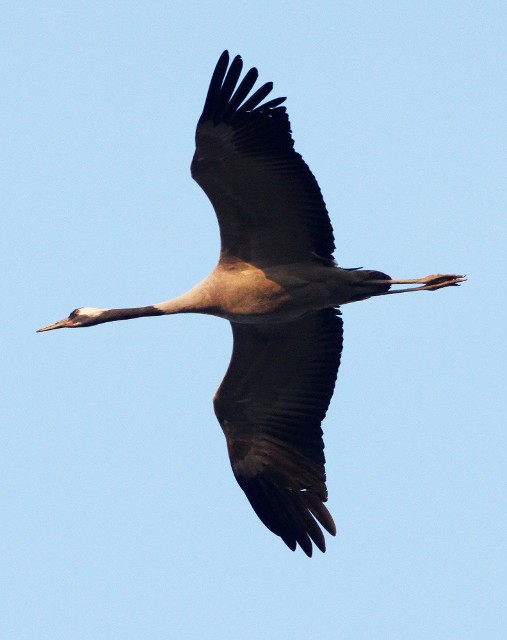
Common Crane (Grus grus). Wow this one was close!
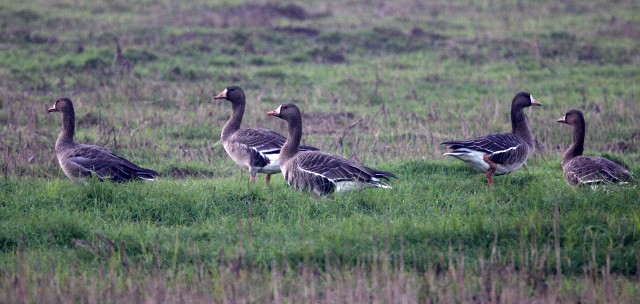
Greater White-fronted Geese (Anser albifrons). This reminded me of being back in Washington...
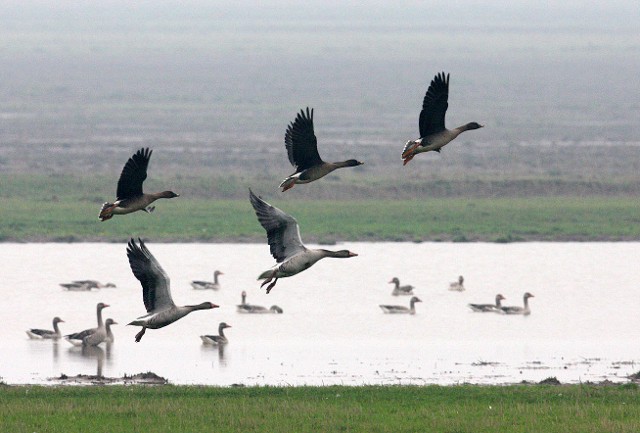
Bean Geese (Anser fabalis) and some Greylags thrown in for fun...

Bean Geese (Anser fabalis) were seen by the thousands in all directions.
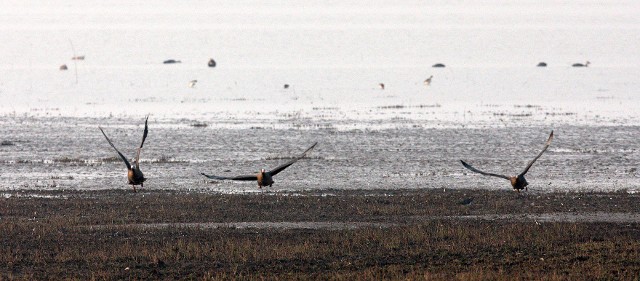
Lesser White-fronted Geese (Anser erythropus). These were the only three seen the during the trip. They were also the first three confirmed sightings for me ever!

Greylag Geese (Anser anser). Note the large orange-red bills.
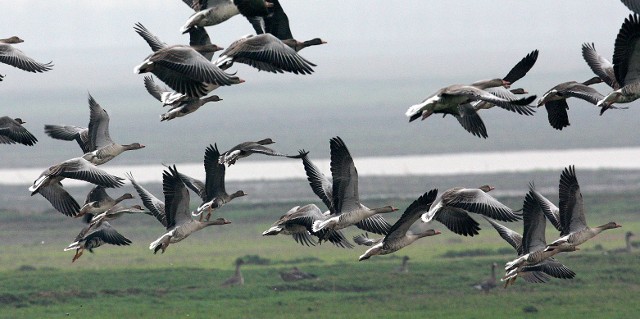
Greylag Geese (Anser anser)

Greylag Geese (Anser anser)

Swan Geese (Anser cygnoides). These were a great lifer for me!
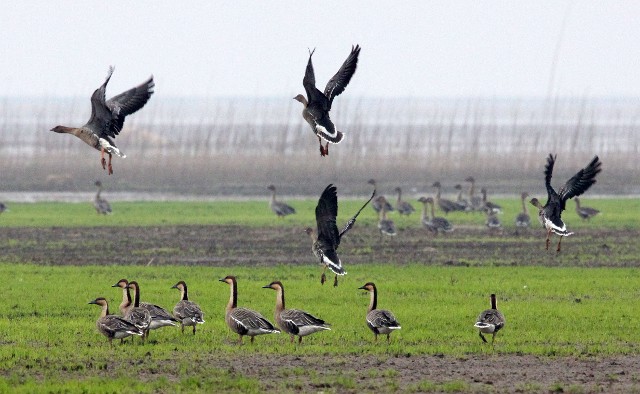
Swan Geese (Anser cygnoides)

The Chinese Domestic Goose was the outcome of the domestication of the Swan Goose.
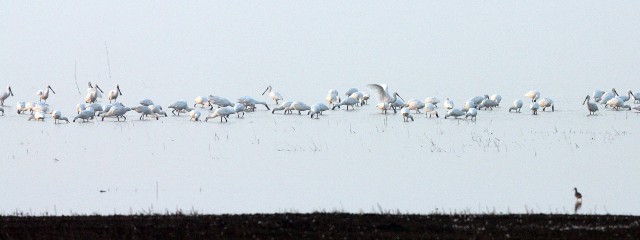
Eurasian Spoonbill (Platalea leucorodia)
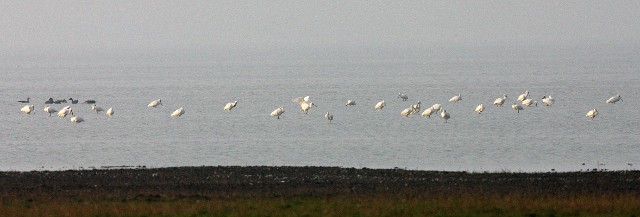
Eurasian Spoonbill (Platalea leucorodia)

Bewick's Tundra Swan (Cygnus columbianus bewickii)
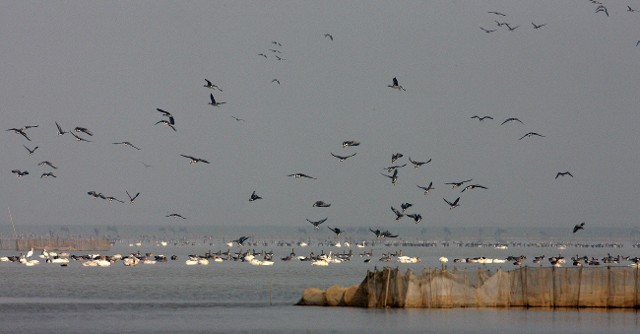
Bewick's Tundra Swan (Cygnus columbianus bewickii)
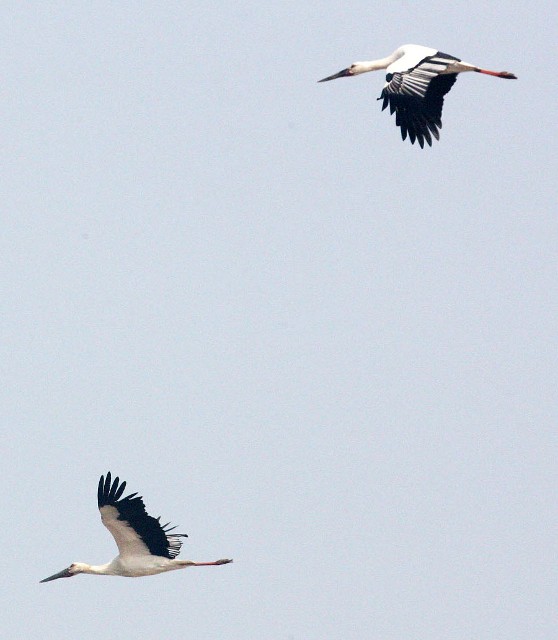
Oriental Stork (Ciconia boyciana)
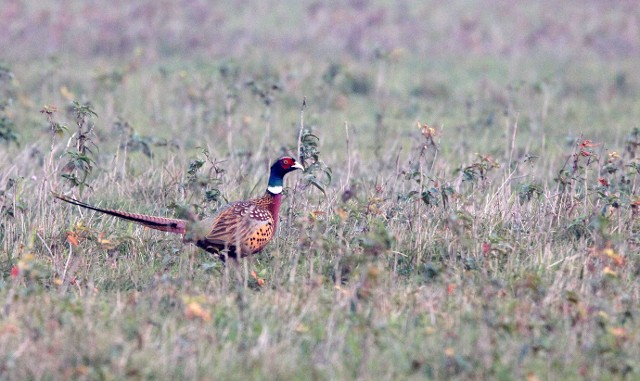
Ring-necked Pheasant (Phasianus colchicus). It is one thing seeing these birds walking around the fields of North America, where they were introduced, but it is another thing seeing them here in their native habitat!
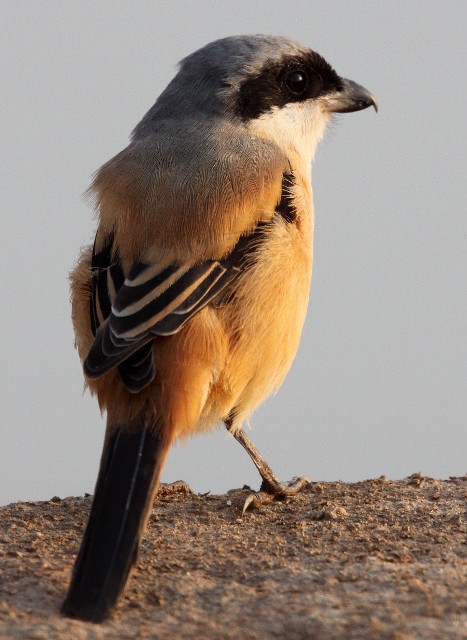
Long-tailed Shrike (Lanius schach seen along the roadside on a sunny day! These little boogers were at our sides nearly every moment.
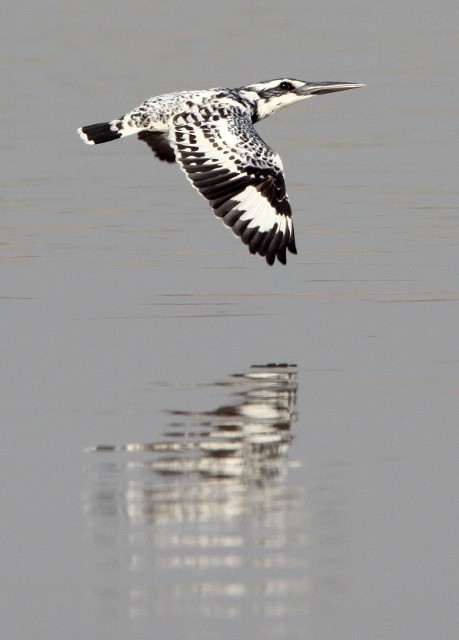
Pied Kingfisher (Ceryle rudis) - talk about a quick photograph!
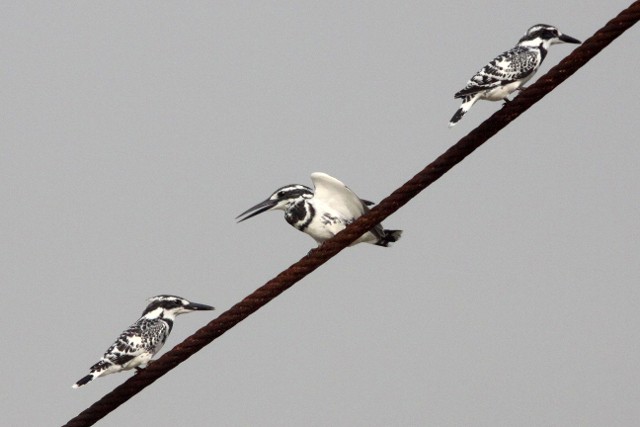
Pied Kingfisher (Ceryle rudis)
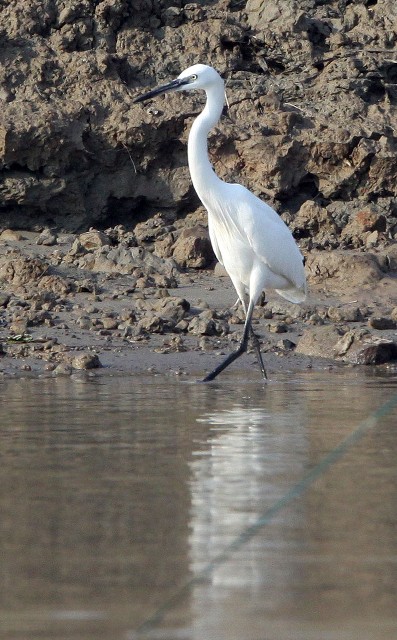
Little Egret (Egretta garzetta)
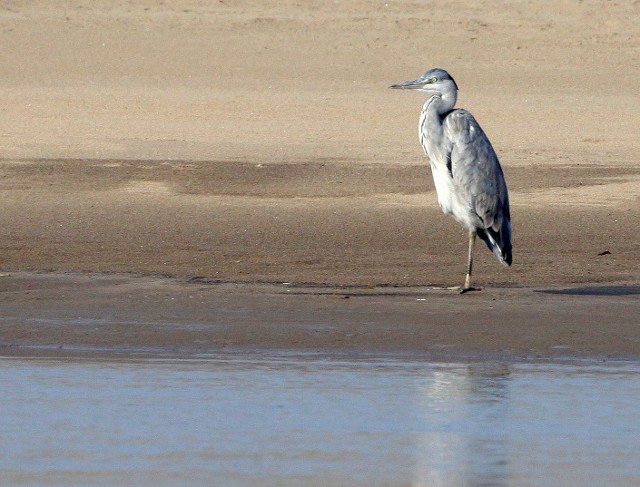
Grey Heron (Ardea cinerea)
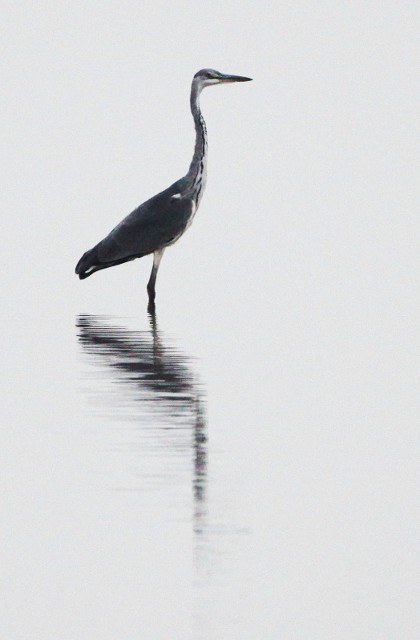
Grey Heron (Ardea cinerea). There were spots filled with hundreds of these great birds.
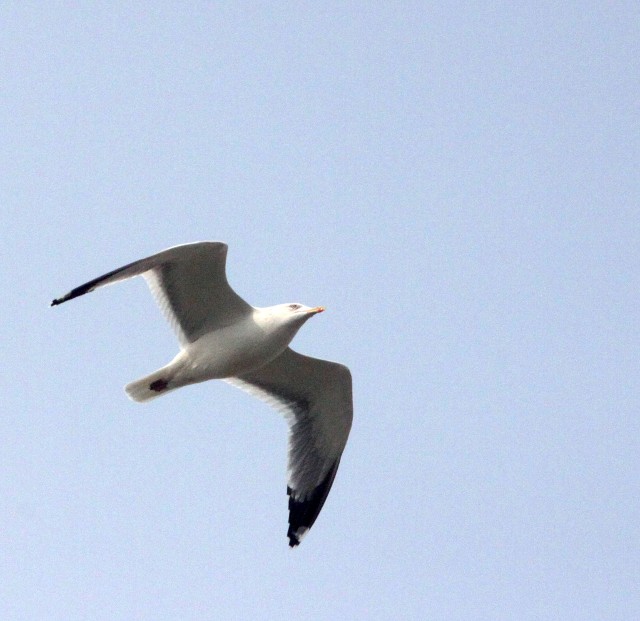
Mongolian Gull (Larus mongolica)

Mongolian Gull (Larus mongolica) first year immature.

Black-headed Gull (Chroicocephalus ridibundus)

Rook (Corvus frugilegus). A relative rarity in China, we came across over 1600 of these corvids!

Daurian Jackdaw (Coloeus dauuricus) immatures. We last saw these birds at Lake Baikal!
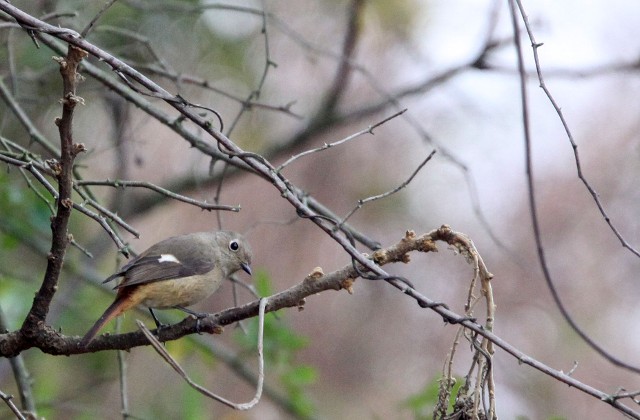
Female Daurian Redstart (Phoenicurus auroreus)

Brown-flanked Bush Warbler (Cettia fortipes)

Spotted Reshank (Tringa erythropus). I was blown away by the numbers of this species seen - over 6000++!

Common Greenshank (Tringa nebularia)
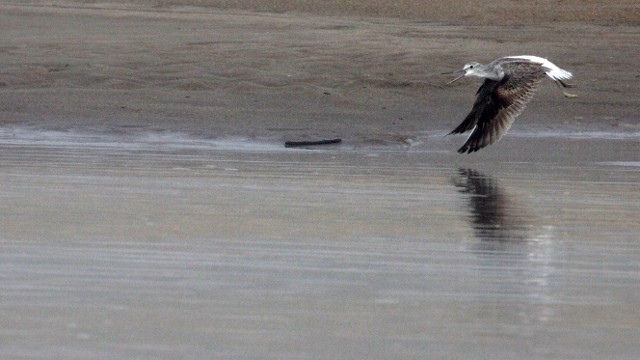
Common Greenshank (Tringa nebularia)
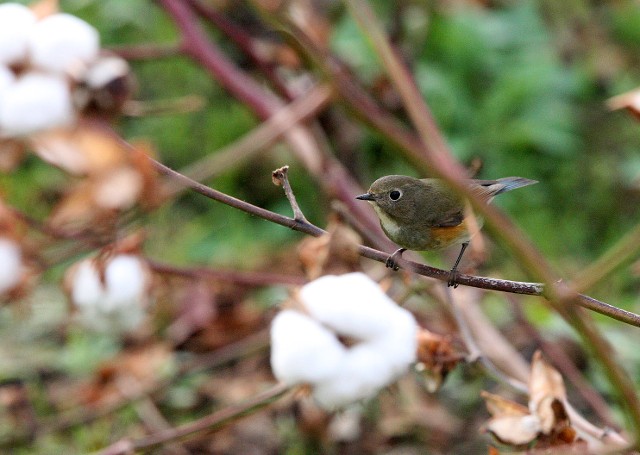
Red-flanked Bluetail (Luscinia cyanura) female.
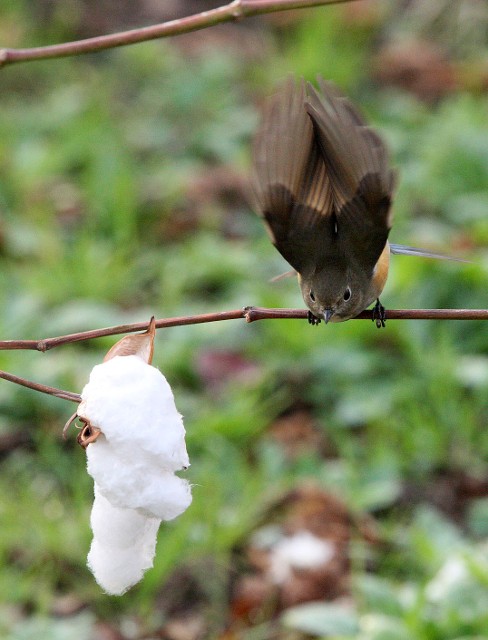
Red-flanked Bluetail (Luscinia cyanura)

Yellow-bellied Prinia (Prina flaviventris) hiding in the reeds.

Water Pipit (Anthus spinoletta). We spotted one of these rarities while waiting for our ferry.

Buff-bellied Pipit (Anthus rubescens). This species were omnipresent in every location.
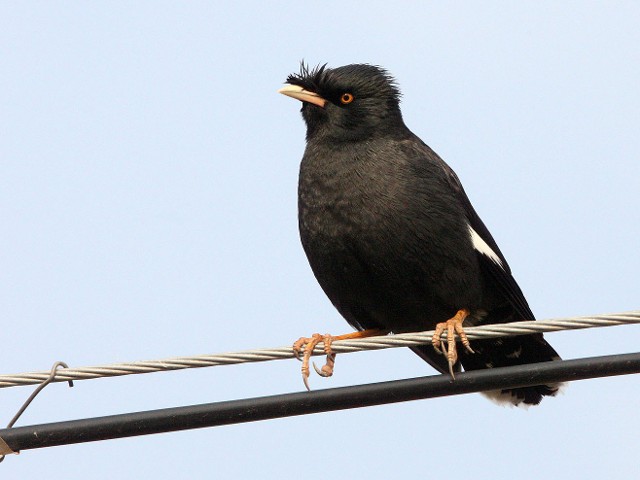
Crested Myna (Acridotheres cristatellus)
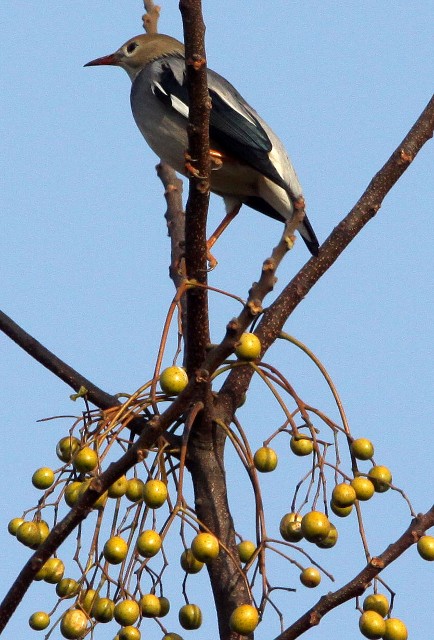
Red-billed Starling (Sturnus sericeus)
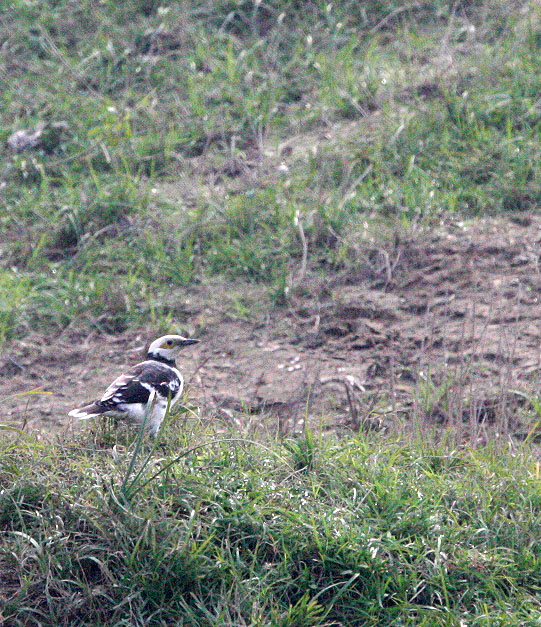
White-cheeked Starling (Sturnus cineraceus). Such a spectacular starling - I must get a better image someday!
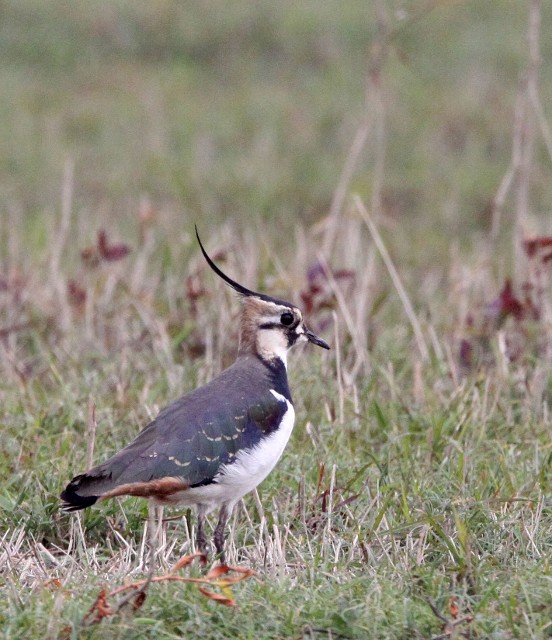
Northern Lapwing (Vanellus vanellus). I need to get a comparison image with its summer plumage.
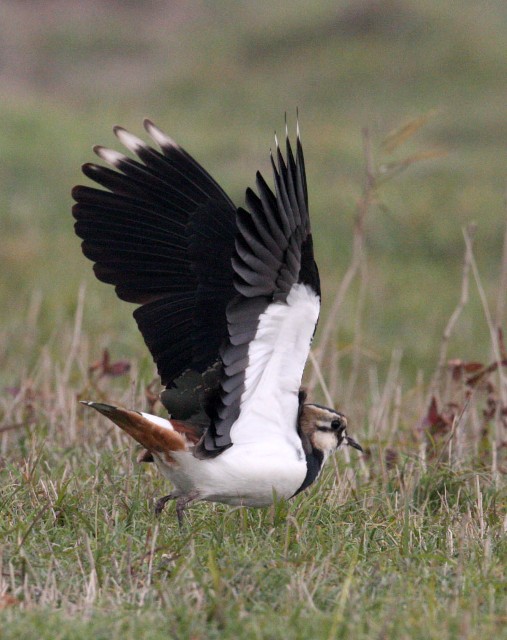
Northern Lapwing (Vanellus vanellus). Som took this image from the back seat of our cramped little van with the 600mm!

Chinese Grosbeak (Eophona migratoria) female.

Som and her new family in Wu Cheng!
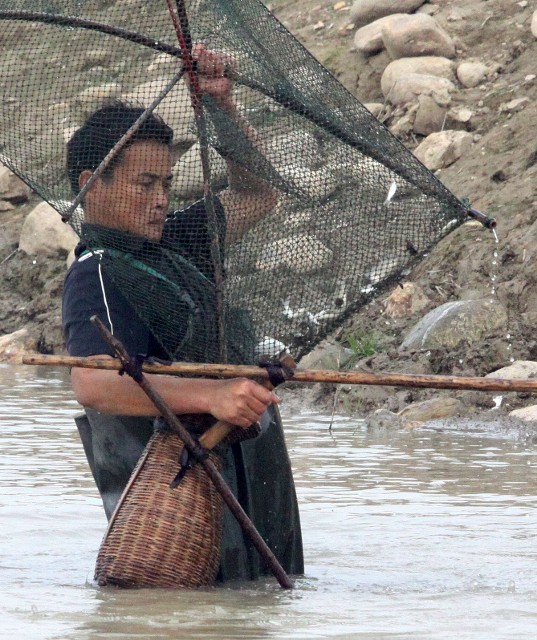
Fishing in Poyang!
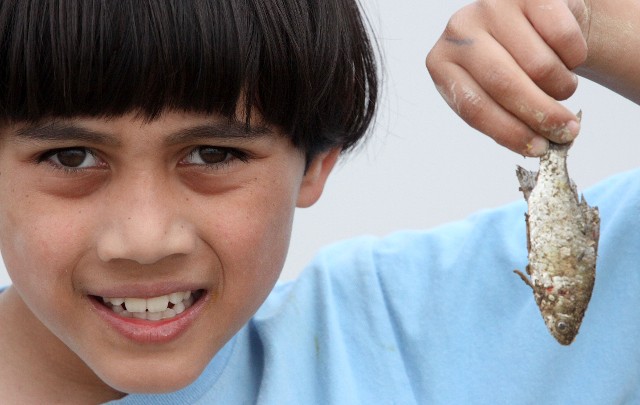
Even Cokie got in to the fishing scene!

I can't believe this car made it! The roads were 4X4 horrible!
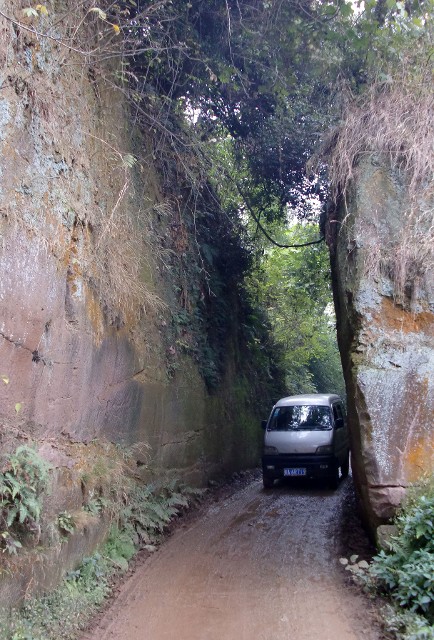
Cutting through the rock outcroppings at Ji Hill! This little ride made it all the way!

Got any "som", Som?
Bird List for Poyang Lake, Jiangxi Province, China
- Ring-necked Pheasant (Phasianus colchicus) 30+
- *Swan Goose (Anser cygnoides) 200+
- Bean Goose (Anser fabalis) 6000-10000+
- Greylag Goose (Anser anser) 1000++
- Greater White-fronted Goose (Anser albifrons) 6000-10000+
- Lesser White-fronted Goose (Anser erythropus) 3
- *Bewick’s Tundra Swan (Cygnus columbianus bewickii) 2000++
- Eastern Spot-billed Duck (Anas zonorhyncha) 400-500++
- Mallard (Anas platyrhynchos) 15+
- Northern Pintail (Anas acuta) 1
- Eurasian Teal (Anas crecca)
- Common Pochard (Aythya ferina) 10+
- *Baer’s Pochard (Aythya baeri) 2
- Great Crested Grebe (Podiceps cristalus) 150+
- Little Grebe (Tachybaptus ruficollis) 100+
- *Oriental Stork (Ciconia boyciana) 120-200+
- Eurasian Spoonbill (Platalea leucorodia) 1000+
- Black-crowned Night Heron (Nycticorax nycticorax) 1
- Grey Heron (Ardea cinerea) 700+
- Great White Egret (Casmerodius albus) 20+
- Little Egret (Egretta garzetta) 50++
- Merlin (Falco columbarius) 1
- Peregrine Falcon (Falco peregrinus) 3
- Eastern Marsh Harrier (Circus spilonotus) 1 (ID via poor photo)
- *Hen Harrier (Circus cyaneus) 3
- *Upland Buzzard (Buteo hemilasius) 1 (Black morph – rare!)
- Common Moorhen (Gallinula chloropus) 1
- Siberian Crane (Grus leucogeranus) 800-1000+
- *White-naped Crane (Grus vipio) 250++
- Common Crane (Grus grus) 25+
- *Hooded Crane (Grus monacha) 200+
- Northern Lapwing (Vanellus vanellus) 200+
- *Pied Avocet (Recurvirostra avosetta) 25+
- Common Snipe (Gallinago gallinago) 20+
- Eurasian Curlew (Numenius arquata) 1
- *Spotted Reshank (Tringa erythropus) 6000+++
- Common Greenshank (Tringa nebularia) 1
- Green Sandpiper (Tringa ochropus)
- *Mongolian Gull (Larus mongolica) 5+
- Black-headed Gull (Chroicocephalus ridibundus) 100+
- Oriental Turtle Dove (Streptopelia orientalis) 2
- Spotted Dove (Streptopelia chinensis) 50++
- White-throated Kingfisher (Halcyon smyrnensis) 1
- Common Kingfisher (Alcedo atthis) 1
- Pied Kingfisher (Ceryle rudis) 30+
- Long-tailed Shrike (Lanius schach) 50+
- Daurian Jackdaw (Coloeus dauuricus) 25++
- *Rook (Corvus frugilegus) 1600+
- Yellow-bellied Tit (Periparus venustulus) Seen by Zhang 1
- Eurasian Skylark (Alauda arvensis) 30+
- Oriental Skylark (Alauda gulgula) 150+
- Zitting Cisticola (Cisticola juncidis) 3
- *Yellow-bellied Prinia (Prina flaviventris) 1
- Chinese Bulbul (Pycnonotus sinensis) 5+
- *Marsh Grassbird (Japanese Swamp Warbler) (Megalurus pryeri) 3
- *Brown-flanked Bush Warbler (Cettia fortipes) 2
- Crested Myna (Acridotheres cristatellus) 200+
- *Black-collared Starling (Sturnus nigricollis) 5
- *Red-billed Starling (Sturnus sericeus) 1500++
- *White-cheeked Starling (Sturnus cineraceus) 10+
- Red-flanked Bluetail (Luscinia cyanura) 2
- Daurian Redstart (Phoenicurus auroreus) 2
- Eurasian Tree Sparrow (Passer montanus) 500++
- White Wagtail (Motacilla alba) 5+
- Richard’s Pipit (Anthus richardi) 1
- Olive-backed Pipit (Anthus hodgsoni) 1
- *Buff-bellied Pipet 500++
- *Water Pipit (Anthus spinoletta) 1
- Chinese Grosbeak (Eophona migratoria) 5+
70. Unidentified masses of black dots representing birds 150,000+++++++!
*One of the 20 lifers for me on this trip!
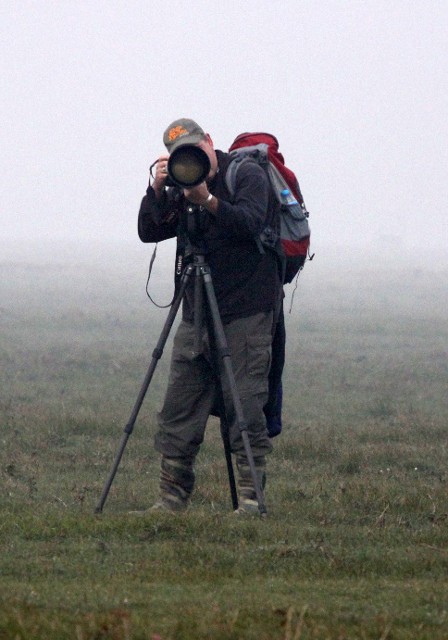
Smile!
To see even more images of our Poyang Lake adventure log on to
